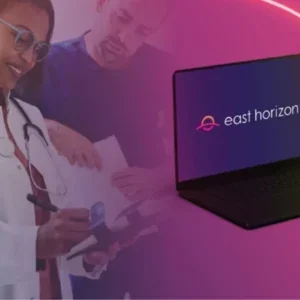
Combination products are therapeutic and diagnostic products that combine drugs, devices and/or biological products to create safer and more effective treatments. They offer precise drug targeting, local administration and therapies that can be personalised to the patient. These technologies are particularly beneficial for patients suffering from conditions such as cancer, heart disease, multiple sclerosis and diabetes.
Despite the numerous advantages, they also face unique challenges. Under EU law, combination products must be registered as either pharmaceutical products or medical devices. For drug/device combinations, significant problems can occur when there is a lack of knowledge about the regulatory environment, product design and corporate collaborations, among other issues. It is imperative for manufacturers to fully understand each country’s specific requirements to ensure timely and accurate market access.
The increased complexity of the products brought to market over the past couple of decades has created a need for more collaborative working, drawing upon resources from both regulatory agencies and the pharmaceutical industry. Moreover, there is a need for additional innovative processes for developing more complex devices, which adequately addresses the needs and preferences of patients.
Paul Greenhalgh, director of design at Team, has a wealth of experience in developing these devices. He has worked in the industry for almost 20 years, which included working on an organ transplant system and a surgical haemostat delivery device.
More recently, Greenhalgh has participated in projects such as point-of-care diagnostic systems, wearables and an ever-increasing number of connected drug delivery devices.
For Greenhalgh, keeping the end goal top-of-mind is fundamental to success. “My involvement has ranged from programme management and strategic decision support at the front end, through to directing design,” says Greenhalgh. “But, no matter the individual project – or my personal role – our focus is always on delivering a product that meets the demands of the market and provides an optimal user experience.”
Designed for the patient
One of the central principles guiding Greenhalgh’s work is design thinking. “We are not designing products to increase shelf appeal or introducing new features to justify a price hike,” explains Greenhalgh. “The products we develop are designed to meet real need – to help people better manage their heath conditions, or make it easier for a heathcare professional to do their job.”
There are several important ways that design thinking plays into this. “Design thinking methodology encourages a stage of gaining empathy with your stakeholders and identifying the key design challenges at the start of a project,” says Greenhalgh. “When designing medical devices, you’re often creating them for people with a very different set of circumstances to you, people who face real challenges in managing their health that you or I wouldn’t consider. Because of this, it’s imperative that we dedicate time to consider the needs of those who will use the product before we move into ideation.”
This concept also influences the way that the device is developed, by focusing on collaboration. “Very few of the briefs we receive can be undertaken without the combined skills of a broad team,” says Greenhalgh. “You need to pull together people who think differently and specialise in the parts of the development process, for example, front-end innovation or industrialisation.”
The third element of design thinking is an emphasis on experimentation. “Most of what we do follows an iterative approach of design, prototype and test,” explains Greenhalgh. “Unlike the consumer world, we don’t have the luxury of launching an experimental product in the market to learn what consumers want or need.”
This demands a lot of groundwork to ensure that the product will be a success. “We have to spin some pretty rapid iterations to ensure we’ve optimised usability, design for manufacture and user experience before a project is ready for launch,” says Greenhalgh. “Humans are very difficult to predict. It’s not until you have something in the hands of a person that you really start to understand how they will behave.”
A popular combination
There is a wide range of drug-device combination products on the market and in development but some are particularly popular, such as connected devices. “The industry is very quickly looking to technology for ways to promote adherence and in turn improve healthcare outcomes,” explains Greenhalgh. “Connected devices and digital solutions have the potential to provide better data on what really goes on when people use devices ‘in the wild’.”
This is not just about producing clever sensing devices. “To capitalise on the investment in smart devices – and the infrastructure needed to support them – we need to share data, knowledge of user experience design, analytics and behavioural science,” says Greenhalgh. “We’ll also need to focus on what will encourage users to adopt this new technology and feel comfortable to share their data.”
There’s a running theme in this work: collaboration. “We are already seeing some interesting partnerships between the tech community, healthcare institutions, and the manufacturers of drugs and devices,” says Greenhalgh. “We are well on the way to a healthcare revolution.”
One factor making combination products especially challenging to develop is the increasing scrutiny on human factors (HF). “The work required to prove safe and effective use is very onerous and requires a very well-considered HF programme,” says Greenhalgh. “Combination products are often used by people in a home environment, without the support of a trained healthcare professional, so we need to understand behaviours, design for what people do intuitively and work hard if we want them to change their behaviour.”
Fortunately, there is rarely a need to work from scratch. “We’ve certainly seen an increase in pharma companies adopting a platform approach with a single technology used to delivery numerous therapies to different user groups,” says Greenhalgh. “When looking at design, you therefore need to think about how you might modify or customise a device without changing its core functionality.”
However, this means that there is less flexibility than if you are working from a blank slate. “These platform devices are often based on proprietary technology,” says Greenhalgh. “We may be developing a device around a predefined inhaler ‘engine’ or primary drug container, so you have very little design freedom. We need to optimise the user experience and usability without making changes that would affect clinical performance – that can be quite tricky.”
A rocky future
The future growth of these products, particularly connected devices, is inevitable but there is a need for a lot of trial and error. “It’s going to take a while for the industry to grasp what a ‘useful’, and therefore successful, connected device is,” explains Greenhalgh. “There has been a rush to offer connected variants of devices, but few have made it to market yet. I think the rush will continue for some time but will slow as we consider which solutions are really effective and how we can gather valuable data.”
Societal trends will also shape the development of this field. “The ageing population is another inevitability, so challenges related to usability and user experience aren’t likely to get easier,” says Greenhalgh. “Technology may help to address these challenges, but we’ll still need thoughtful and intelligent designs, good human factors and robust engineering to ensure that devices meet the high demands placed upon them.”
Key considerations to optimise the patient experience when designing complex drug-device combination products
■ Understand who’s going to use it. What are their practical, emotional and lifestyle needs?
■ What else are they using to manage their condition? How might this affect their experience with the product – for example, prior experience bias, reference bias.
■ What is the device competing against in the marketplace? What other products might it be compared with? Not just medical devices, this is particularly important when developing digital solutions that will be accessed on the same home screen as popular apps.
■ What are its timescales, and what are the key milestones it needs to meet? There needs to be enough time to set the right direction for the product, before closing doors that could lead to a suboptimal end solution.
■ How does the device fit into the broader care ecosystem and how can it use various touchpoints to positively affect behaviour? Packaging, labelling, IFU and digital assets can all be used to improve adherence and outcomes.
■ What will set the product apart from competitors? Not just that’s it’s smaller or easier to use, but what makes it a better option for end users? How does it help them manage their condition and reduce the need to change their behaviour?
■ How can any negative environmental impact of a product be reduced? It’s something that should all be asked of everyone and something that is now being taken more seriously by clients.
Source: Paul Greenhalgh, director of design, Team





